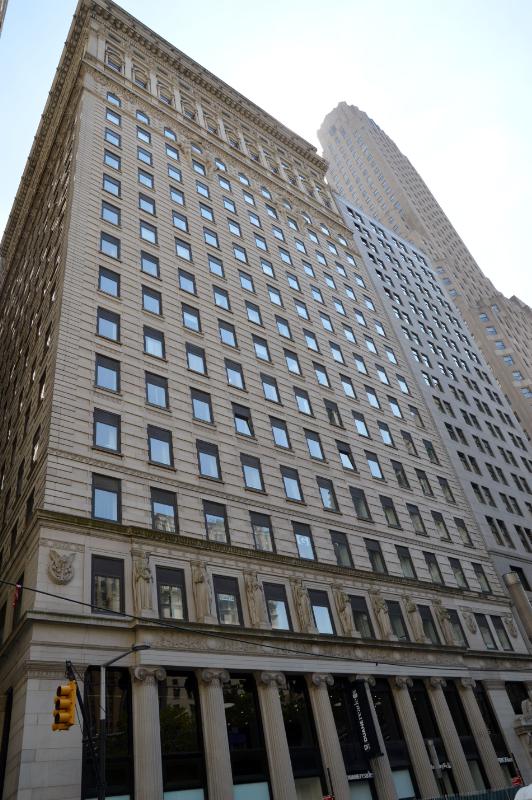Northwood Investors Buys Landmark Building in Lower Manhattan
Northwood Investors has purchased 100 Broadway, a 117-year-old, 24-story, 360,000-square-foot office building at Broadway and Pine Street in Lower Manhattan.
By Scott Baltic, Contributing Editor
 Northwood Investors, of New York and Los Angeles, has purchased 100 Broadway, a 117-year-old, 24-story, 360,000-square-foot office building at Broadway and Pine Street in Lower Manhattan.
Northwood Investors, of New York and Los Angeles, has purchased 100 Broadway, a 117-year-old, 24-story, 360,000-square-foot office building at Broadway and Pine Street in Lower Manhattan.
The transaction was announced Tuesday by Brookfield Financial, which advised Northwood Investors on the off-market transaction. A Brookfield Financial team led by managing partner Chris Wilson also brought Northwood together with the seller.
The seller was Madison Capital, of New York, which had acquired 100 Broadway in 2010 after buying debt on the property and foreclosing on the then owner, Japanese real estate firm Hiro Realty.
“We believe that Lower Manhattan is an evolving and dynamic office market and that 100 Broadway is a terrific property in an outstanding location,” John Kukral, president & CEO of Northwood Investors, said in a release. “While the prior owners have been very successful in leasing the property, we believe it is very well positioned to benefit in the long term from the improvements taking place in the area.”
The building’s website states that a total of 74,450 square feet is currently available on five floors, indicating a vacancy rate of 20–21 percent.
The 40,000 square feet of retail space at 100 Broadway has seen big changes recently. In November 2011, Duane Reade signed a lease for the 22,000-square-foot space formerly occupied by a Borders book store.
Winick Realty, which handles leasing for Duane Reade, took over retail leasing duties at the building, from Cushman & Wakefield, in March 2012. A Winick brochure indicates that 4,400 square feet on the ground floor and 9,000 square feet on the lower level are available.
Long known as the American Surety Building, 100 Broadway was completed in 1896 and was one of Manhattan’s first buildings with steel framing and curtain wall construction. Alterations in 1920–1922 added several stories and an L-shaped annex that widened the building.
The building was renovated for the Bank of Tokyo between 1973 and 1976, and additional renovations and improvements were made by a Hiro affiliate in 1997–98. It was designated an historic landmark in June 1997.







You must be logged in to post a comment.